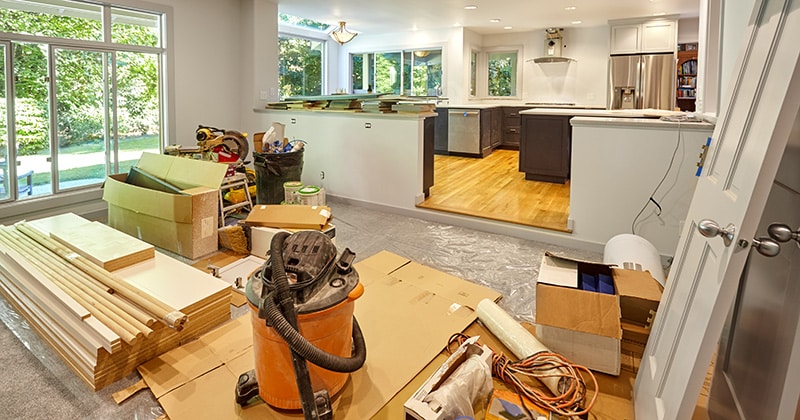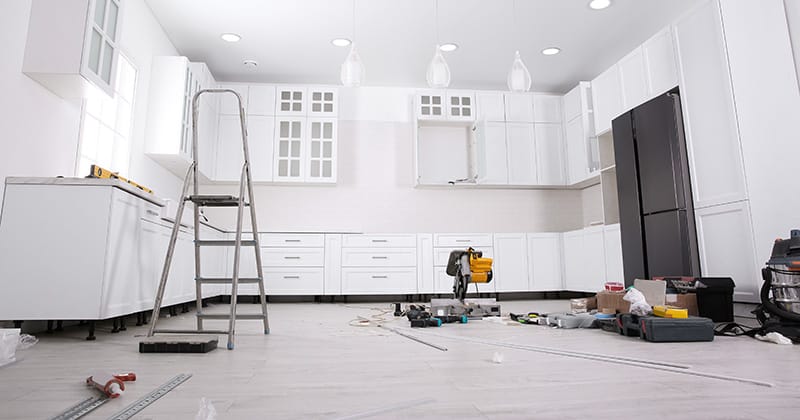7 Steps for Creating a Remodeling Business Plan
A remodeling business plan can make the difference between success or merely surviving. It’s a roadmap that can take your remodeling business from the first spark of an idea to a rousing success.

Staff Contributor
Are you ready to start your own remodeling business or reorganize your existing company? Get off to a great start by creating a business plan. A remodeling business plan can make the difference between success or merely surviving.
Here’s why. According to a 2021 LendingTree survey, “lack of financing” is the biggest roadblock for 40% of prospective startups. Thirty-three percent said that “anxiety and fear it won’t work out” kept them from following their dream.
A well-thought-out business plan can take these roadblocks out of the equation. Discover how to create a plan that can ease your fears and provide you with a solid financial footing.
What Is a Remodeling Business Plan, and Why Do You Need One?

A remodeling business plan documents the information you need to put your business on the right foot. It outlines how you’ll structure your business, run it, and grow it.
It’s a roadmap that will take your remodeling business from the first spark of an idea to a successful operation that will last for years to come.
Why You Need a Business Plan for Your Remodeling Business
If you went on a trip without a roadmap, you’d probably take a few wrong turns before you arrive at your destination. Similarly, starting a business without actionable guidelines also can lead to mistakes.
In the remodeling industry, where equipment doesn’t come cheap, those wrong turns will cost you time and money.
An effective business plan, though, will guide you through each step of getting your business off the ground. Following it can help you manage it and grow it to the next level. The right business plan can make the difference between getting funding or a cold “No thanks.”
Do you need investors to fund your business? If so, a detailed plan will help them see that your company will likely reap a healthy return on the investors’ investments.
Do you plan to partner with others? A well-thought-out business plan can convince them that working with you is the path to success in home renovation.
Types of Business Plans
Business plans fall into two categories: traditional business plans and lean startup plans.
You might start with a lean startup plan at the outset. Then, fill in the details later in a conventional plan that meets all your stakeholders’ requirements.
Traditional Business Plan
A traditional plan covers every detail. Organize it in sections to make it easier for stakeholders to read.
Usually, traditional business plans are several pages long. They cover details of interest to potential investors, lenders, partners, or even customers.
Lean Startup Plan
A lean startup plan states only the essential parts of your business plan. Usually, you can sketch it in less than a day using a visual diagram or short outline on a single page.
The only drawback is that some lenders and investors might want to see greater detail. So, you should set aside some time to fill in the blanks if you need more information.
The Components of a Traditional Remodeling Business Plan

While you might be an expert at residential remodeling, you might feel out of your league when it comes to running a business. Business plan templates can help. Find them at the US Small Business Administration and Score.org websites.
Here are the steps you need to include when creating a traditional business plan.
1. Create an Executive Summary
An executive summary is a brief description of your company and what it does for its clients. If you have a mission statement, include it.
Also, add an overview of your work, key team members, location, a summary of your financial information, and your plans for growth and expansion.
2. Describe Your Remodeling Company’s Work in Detail
In this section, focus on what you do for your clients. Dive into what specific types of challenges you help them solve. Also, state the strengths you bring to the table to solve those problems.
If you already have customers, look for commonalities and list the types of clients you serve.
Do you have a specific niche that you focus on? If so, describe the focus of your work. If you specialize in kitchen remodeling products or restoring vintage homes, provide details.
Investors and lenders will want to evaluate your community’s need for such services. That information will help them decide if your remodeling business will likely succeed.
3. Outline Your Goals and Objectives
List in detail what you want to accomplish with your business. Keep the stakeholders’ interests in mind as you list your goals. They need to see goals that are specific, measurable, achievable, relevant, and have a definite endpoint.
Specify only goals that you have an excellent chance to achieve.
You’ll also need to state the road you’ll take to achieve your objectives. A brief outline of your project management workflow should help stakeholders see that your goals are not just pipe dreams. They will be able to see that you can achieve them.
4. Determine, Analyze, and Document Your Target Market
Your target market consists of all the types of homeowners you typically will serve.
For example, if you specialize in high-end home remodels, you needn’t include the under-$50K per year demographic. On the other hand, if you primarily work on older homes, you need to consider income groups that can only afford fixer-uppers.
Conduct a deep analysis of your target market to see if there are enough potential clients in your local area to make your business profitable. If not, consider expanding your reach into other market segments (potential customer groups) if you have the skills to serve them.
There’s no substitute for extensive market research to determine whether your business is likely to succeed.
Doing your homework before you sink a lot of cash into your business can save you a world of headaches later. Getting it on paper makes it easier for both you and your stakeholders to see the big picture.
5. Research Your Competition
Potential stakeholders will want to know how well you stack up against your competitors. Discover their strengths, weaknesses, and the unique value they bring to their clients.
Then, sketch out a strategy to get ahead of them in each area.
Along with researching your competitors, conduct a similar in-depth analysis of your company. Shore up your weaknesses. Emphasize what you’re great at, and jot down what you do better than your local competitors.
Noting those factors can make you stand out in your prospective stakeholders’ eyes.
6. Structure Your Company
Your business plan should also include how you plan to structure your business. Include both your company’s legal structure and your organizational structure.
State the talents, experience, and education your team brings to your organization. You don’t need to provide complete CVs or resumes but do include their career highlights.
Consider including your hiring guidelines for both subcontractors and employees. For tax purposes, define how you distinguish between the two categories.
7. State How You Will Market Your New Remodeling Business
Revolve your marketing strategy around your prospective customers. As Amazon founder Jeff Bezos put it, be “customer-obsessed” in your focus.
Look at how the top names in the home services field attract and retain customers. Then, evaluate their marketing strategies by their strengths and weaknesses.
Document how you plan to reach out to prospective clients, turn them into paying customers, and keep them loyal for life.
Additional Information You Might Need on Your Remodeling Business Plan

It also pays to include your financial strategy and projections if you’re looking for funding or potential investors. Be sure to specify the amount of funding you’re looking for, along with what you plan to use it for and how you plan to leverage it to drive profits upward.
Also, include visuals. Create an appendix. There, list graphs, charts, and photos of completed renovations that might interest investors.
Finally, include your permits, licenses, and other pertinent information in the appendix. It will help prospective investors build trust in your company.
With an effective, detailed business plan in hand and a dedication to following it through, you can bring your vision to life. Start creating your remodeling business plan today!
Simone is passionately committed to clear copy—no matter who the reader is or what’s being communicated. When she isn’t arguing over semantics, you can find her running, managing too many pets, or wearing passive aggressive t-shirts on video calls.

Business Solutions For Field Service Pros
EverPro offers specialized solutions designed for home and field service professionals. We’ve got the business tools to help you get the job done.



